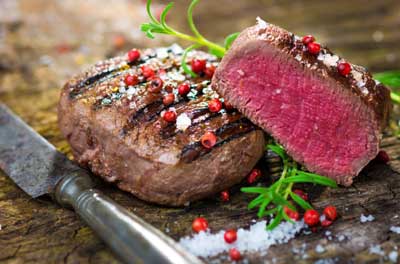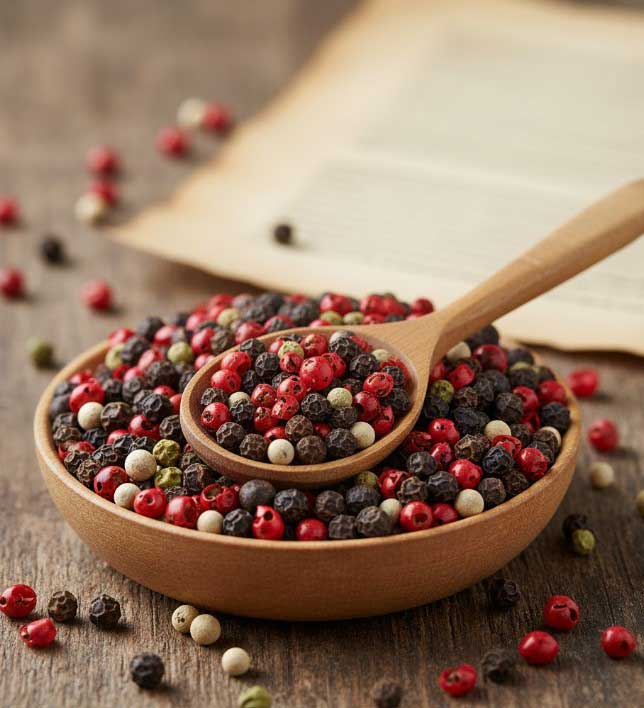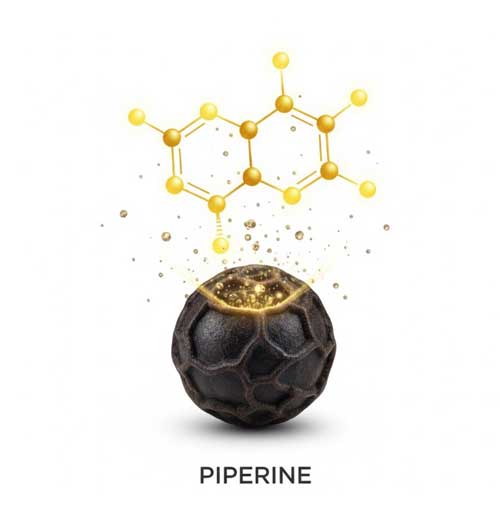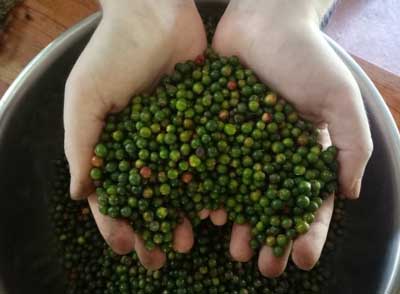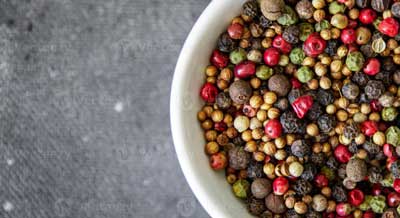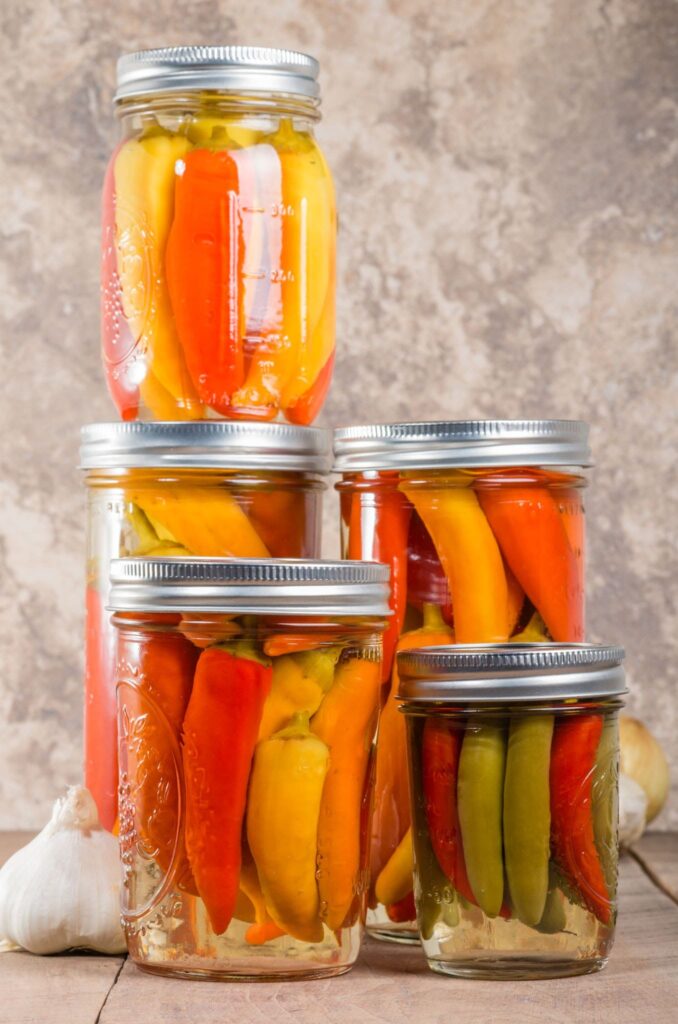
These refrigerator pickles are crunchy, tangy, and have a perfect balance of sweet and spicy. They are delicious on pizzas, sandwiches, tacos, or simply enjoyed as a sharp condiment.
Yields: 2 Pint Jars (approx. 950 ml) Prep Time: 15 minutes Chilling Time: 24 hours (for best flavor development)
Ingredients
For the Peppers
- 1 pound (approx. 450 g) Peppers of your choice: A mix of Jalapeños (sliced into rings) and small sweet peppers or banana peppers (also sliced into rings) provides great color and heat variation.
- 2 cloves Garlic: Peeled and thinly sliced.
For the Brine
- 1½ cups (350 ml) White Distilled Vinegar (must be 5% acidity)
- 1½ cups (350 ml) Water
- 3 tablespoons Granulated Sugar (or maple syrup/agave for a more subtle taste)
- 1½ teaspoons Kosher Salt (or pickling salt)
Optional Flavorings (per jar)
- ½ teaspoon Red Pepper Flakes (for extra heat)
- 1 teaspoon Whole Black Peppercorns
- 1 Bay Leaf
- ½ teaspoon Mustard Seeds
Equipment
- 2 sterilized pint-size Mason jars (or canning jars) with lids
- A medium, non-reactive saucepan (like stainless steel)
- Heat-proof funnel
Instructions
1. Prepare Peppers and Jars
- Sterilize Jars: Wash the glass jars and lids thoroughly. For sterilization, you can boil the jars in water for 10 minutes or run them through a high-temperature dishwasher cycle.
- Slice Peppers: Slice into uniform rings (about 0.5 cm thick). To reduce heat, you can remove the membranes and seeds (wear gloves for handling hot peppers!).
- Fill Jars: Divide the peppers evenly between the two sterilized jars. Add the sliced garlic and your chosen optional flavorings (peppercorns, bay leaf, etc.) to each jar.
2. Make the Brine
- Combine Ingredients: Combine the vinegar, water, sugar, and salt in the saucepan.
- Boil: Bring the mixture to a rolling boil over medium-high heat, stirring until the salt and sugar are completely dissolved. Turn off the heat immediately once it boils.
3. Brine and Seal
- Pour Brine: Place the funnel on the jars and carefully pour the hot brine over the peppers, ensuring they are fully submerged. Leave about a ¼-inch (approx. 0.5 cm) headspace at the top.
- Remove Bubbles: Gently tap the jars on the counter to release any trapped air bubbles. Add a little more brine if necessary to maintain the headspace.
- Seal: Wipe the rims of the jars clean, place the lids, and screw on the rings until fingertip tight.
4. Chill and Cure
- Cool: Allow the jars to cool completely to room temperature on the counter.
- Refrigerate: Once cooled, transfer the jars to the refrigerator.
When are they ready? They are ready to eat after just 8 hours, but the flavors will be best after a minimum of 24 hours of chilling. Storage: These pickled peppers will keep well in the refrigerator for 2–3 months.
Health Benefits of Pickled Peppers
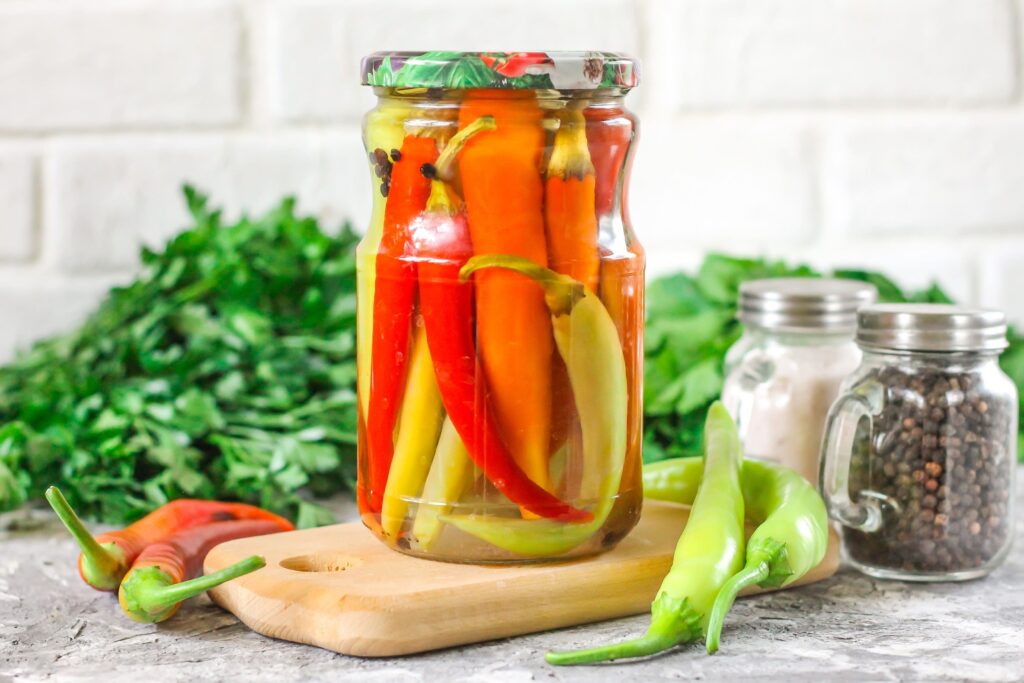
While enjoying the delicious crunch and tang of pickled peppers, you also benefit from several healthy properties derived from the peppers themselves and the pickling process:
- Capsaicin Power: Chili peppers (such as Jalapeños) are rich in capsaicin, the compound responsible for their heat. Capsaicin is a known powerhouse that can temporarily boost metabolism and may possess anti-inflammatory and pain-relieving properties.
- Rich in Antioxidants: Peppers are naturally packed with Vitamin C and various antioxidants (like Vitamin A). Although some nutrients diminish during the heat of the pickling process, many antioxidants remain to help combat free radicals in the body.
- Vinegar’s Role in Digestion: The acetic acid in the vinegar has been studied for its potential to help regulate blood sugar levels and improve insulin sensitivity, particularly when consumed with meals.
- Low-Calorie Flavor: They add intense flavor and heat to meals for very few calories, making them an excellent way to spice up healthy but simple dishes without relying on added fats or heavy sauces.

